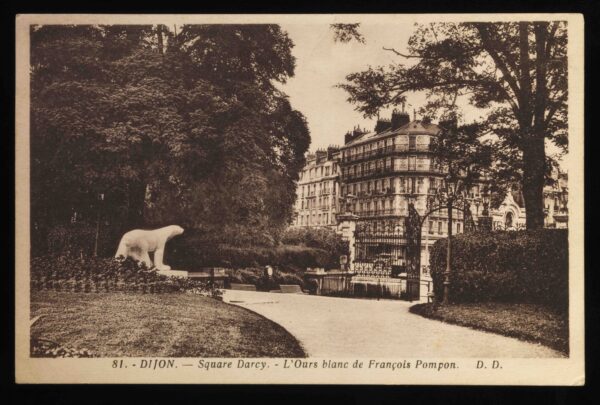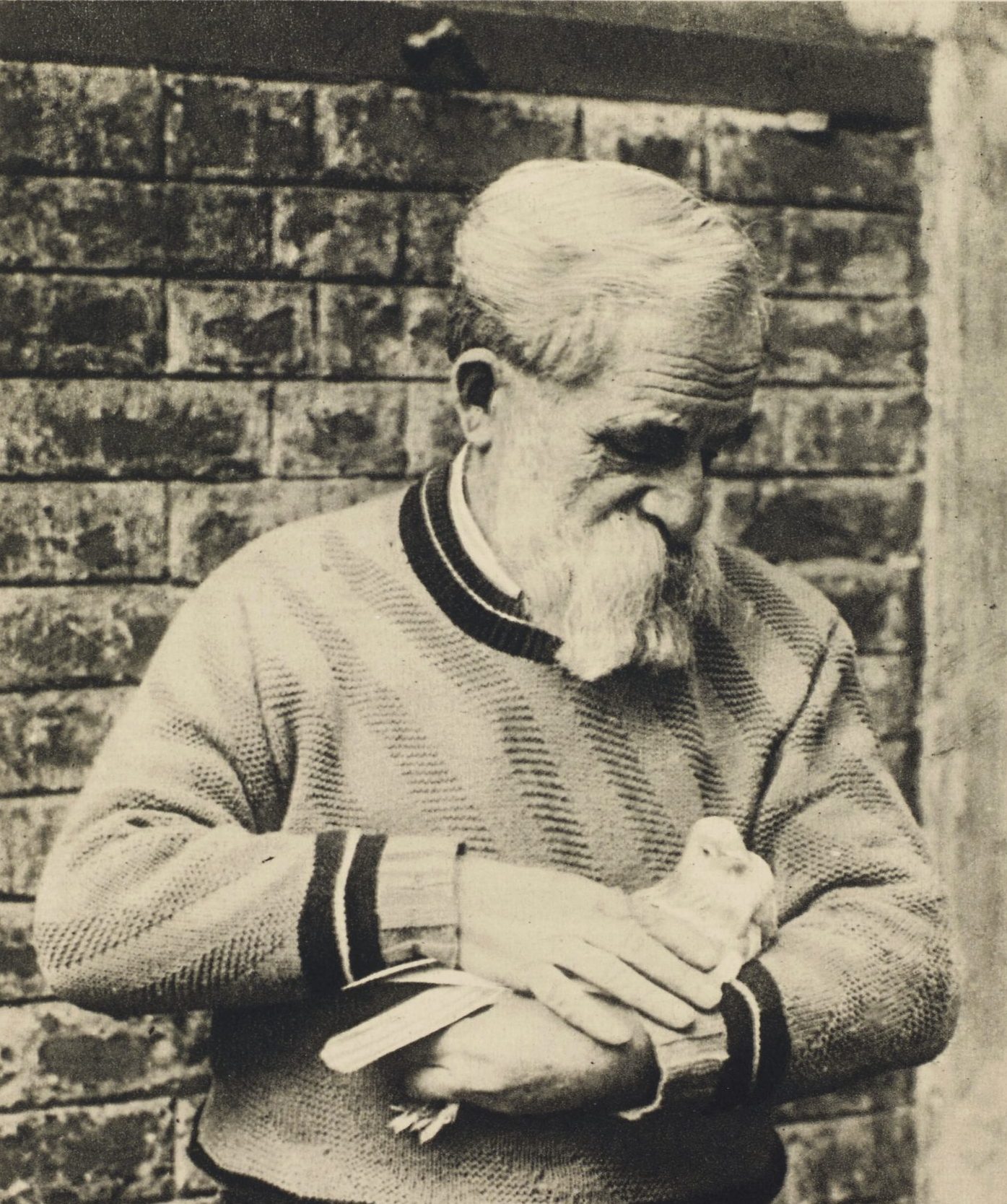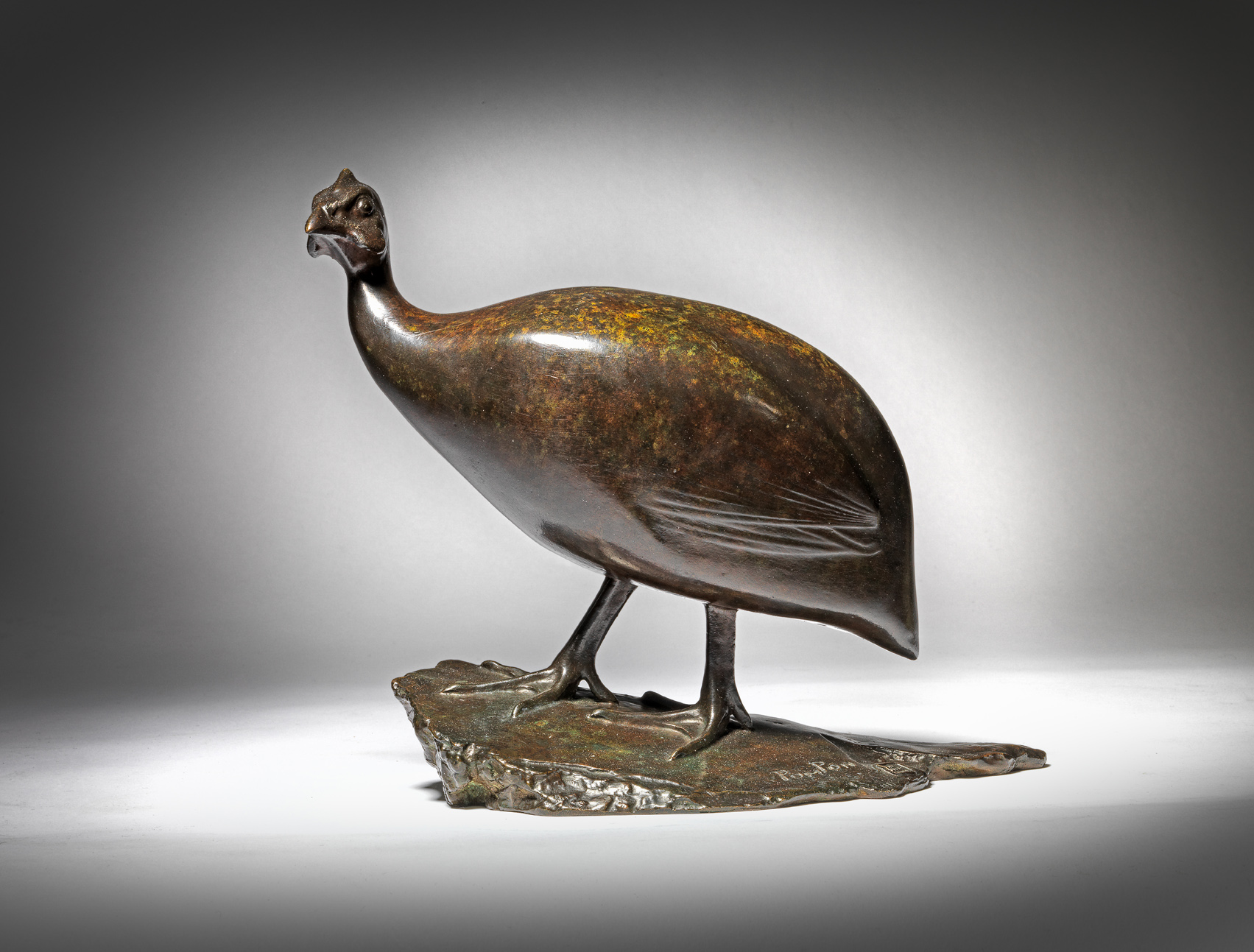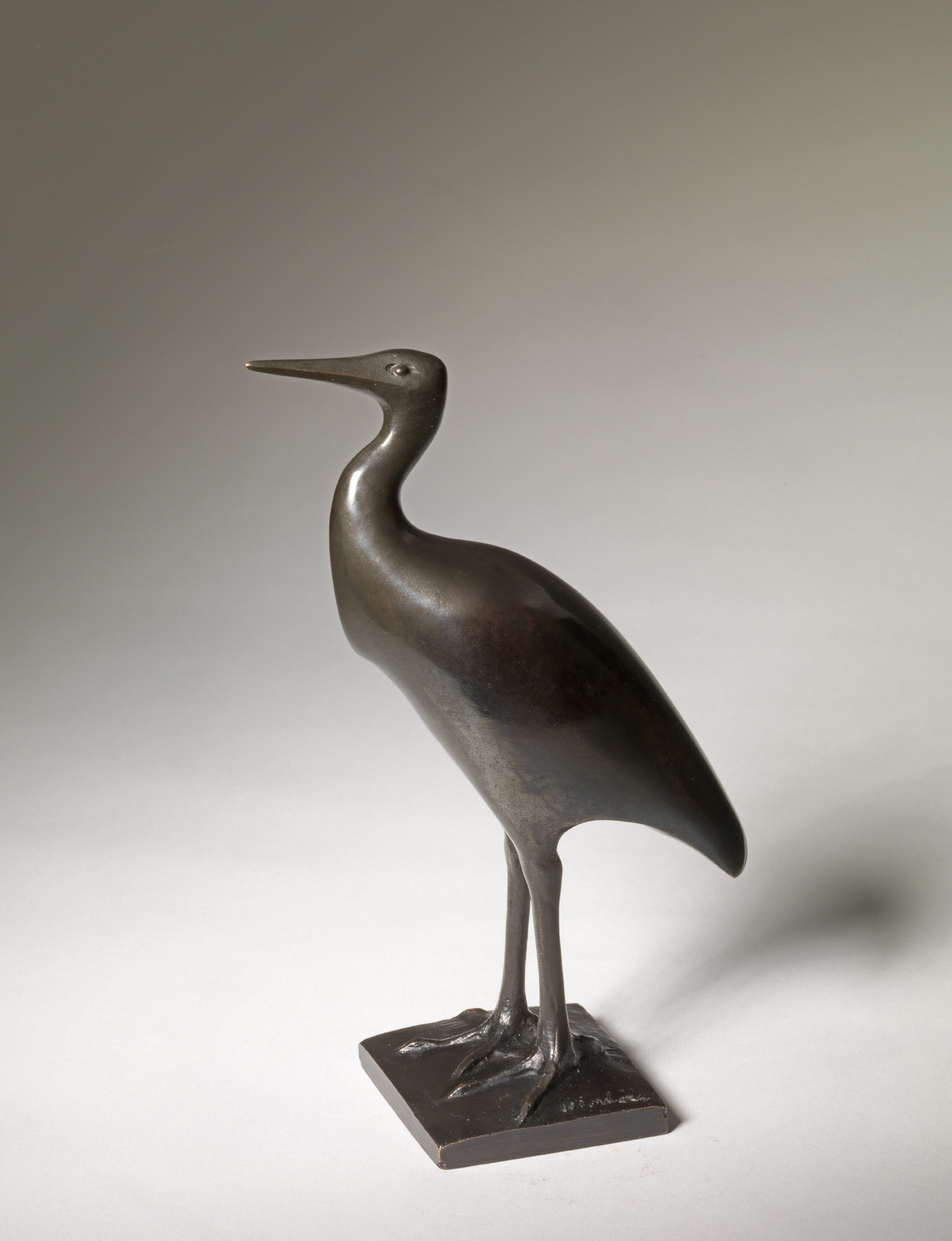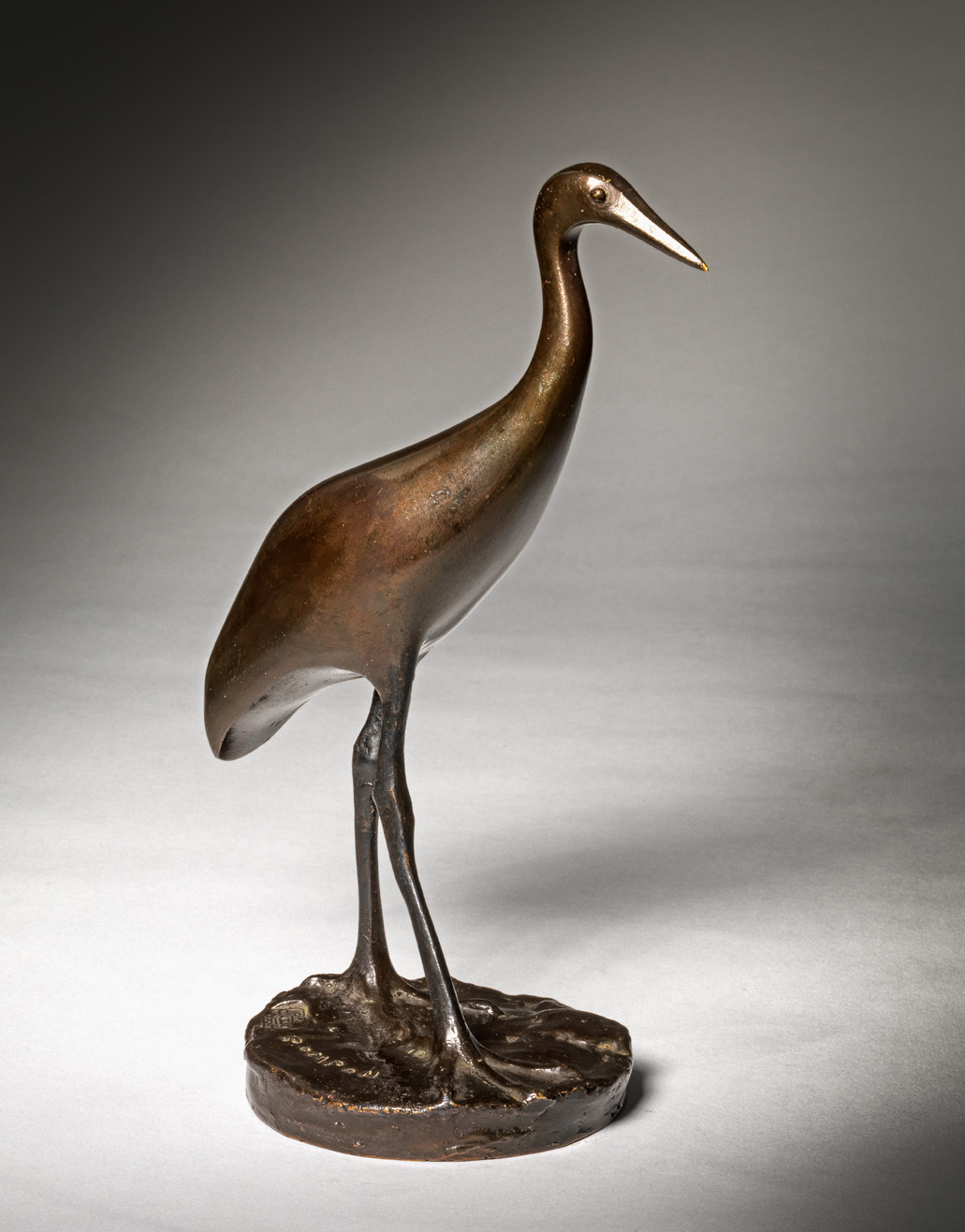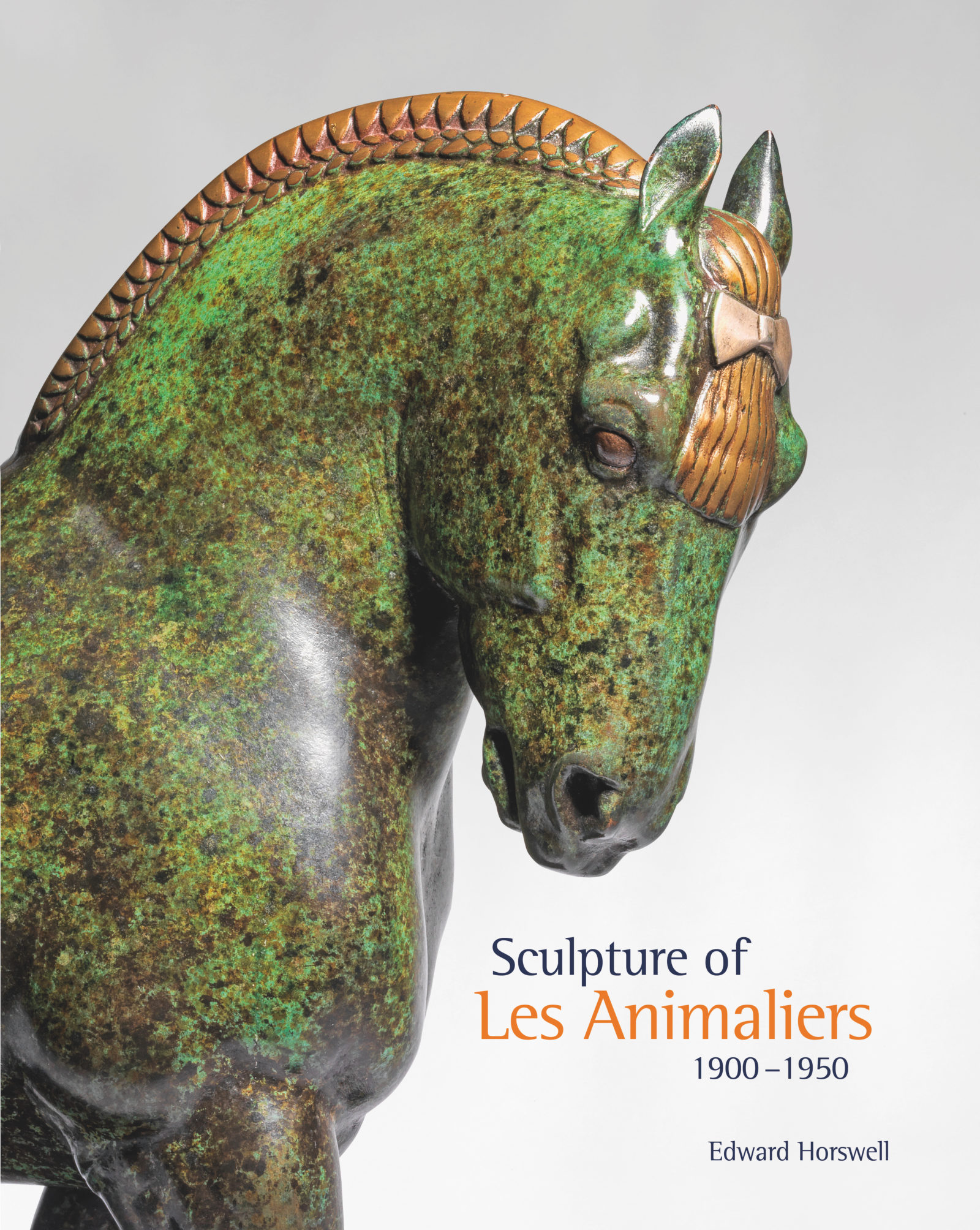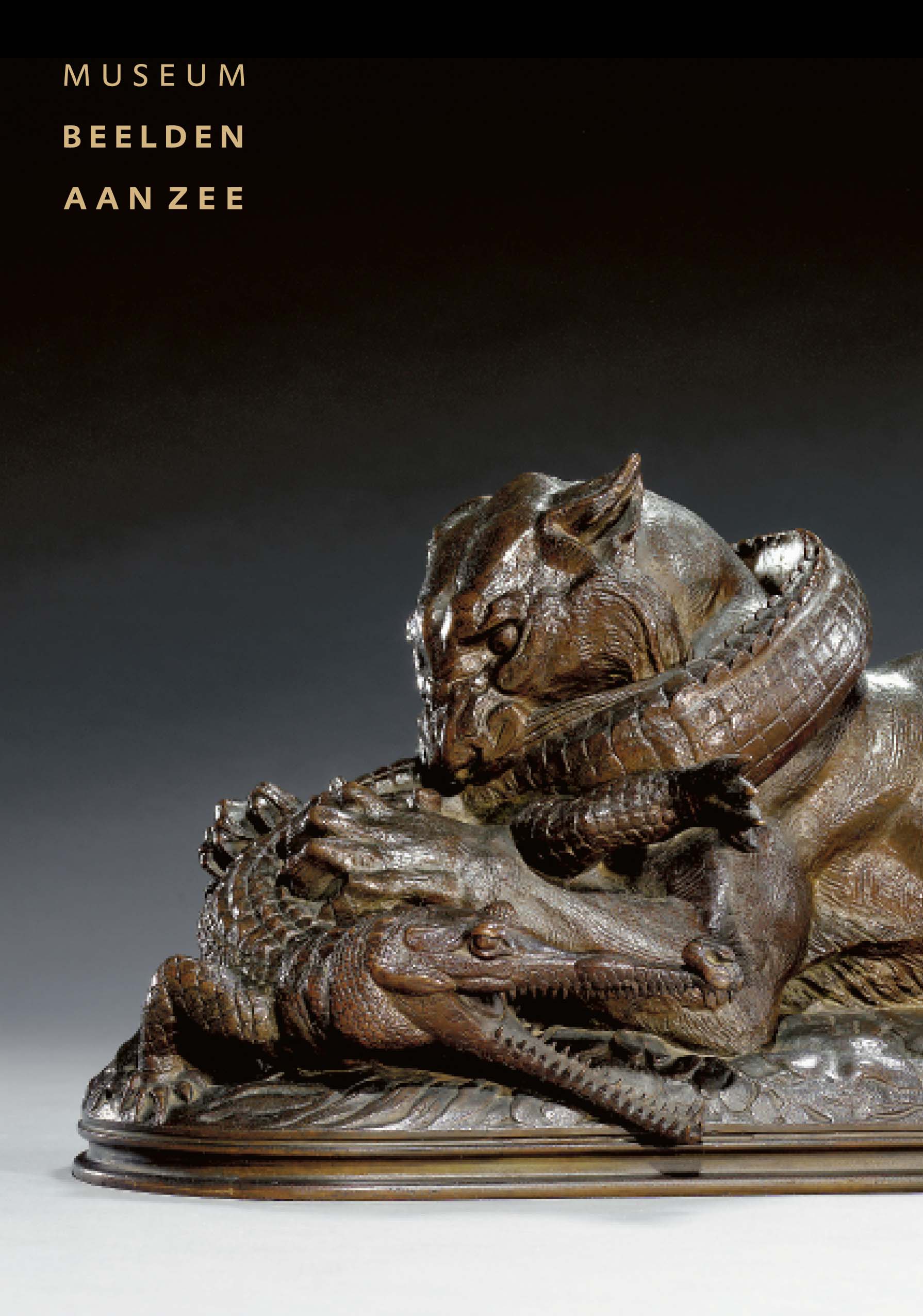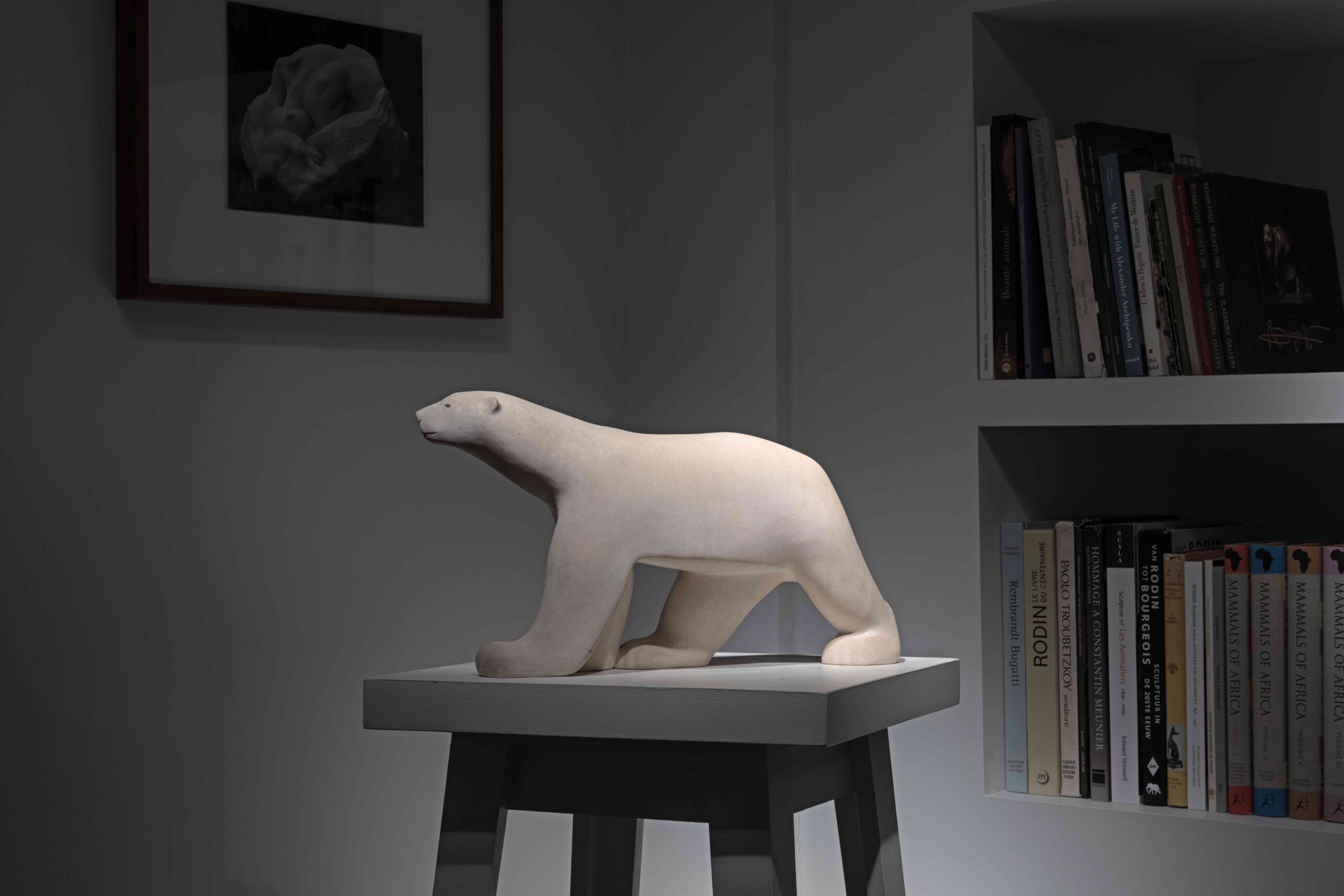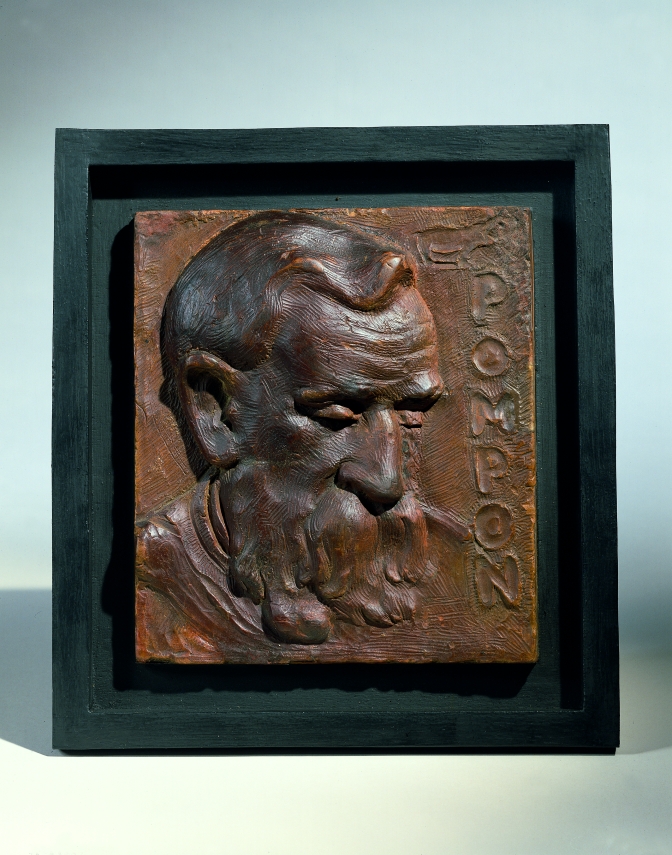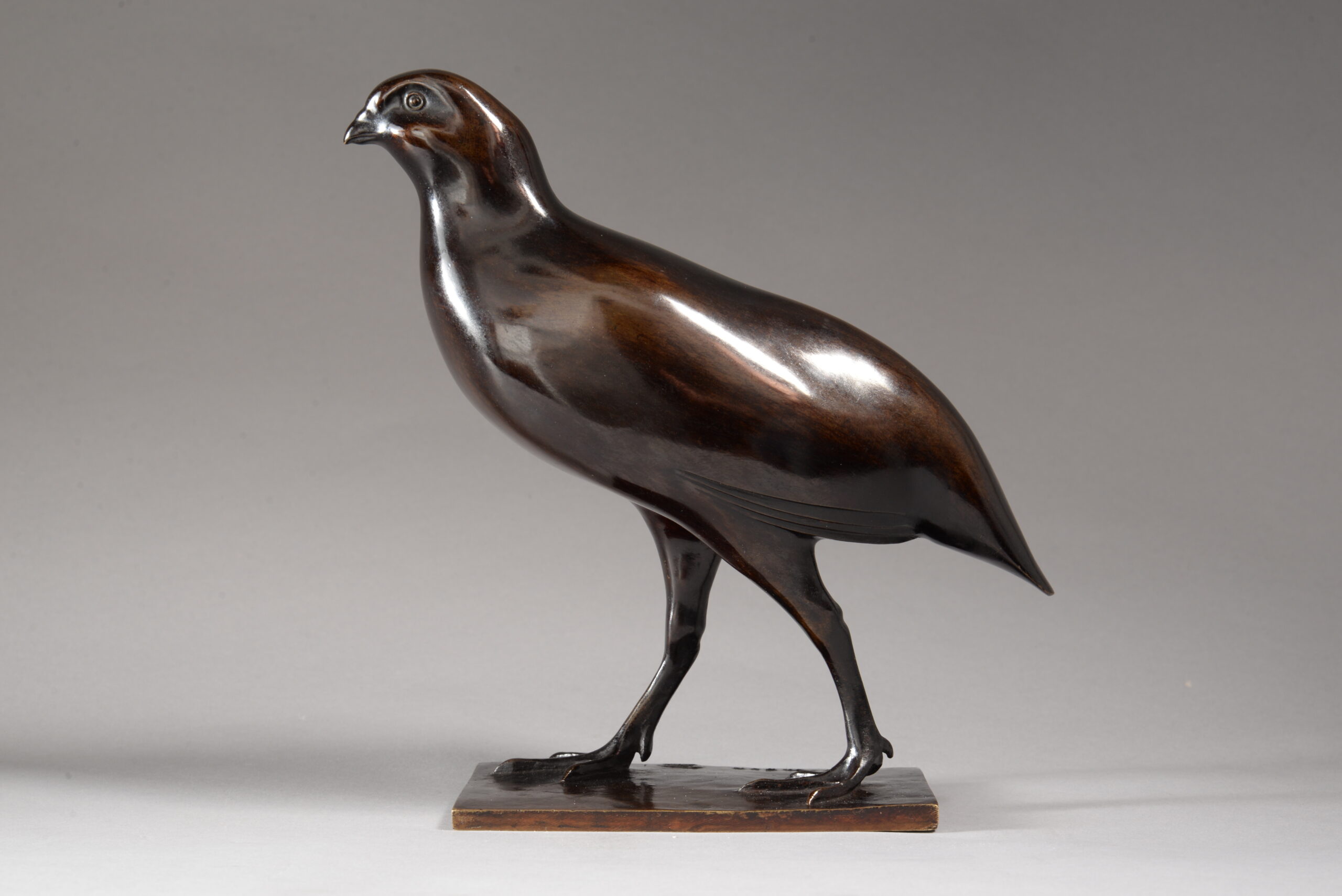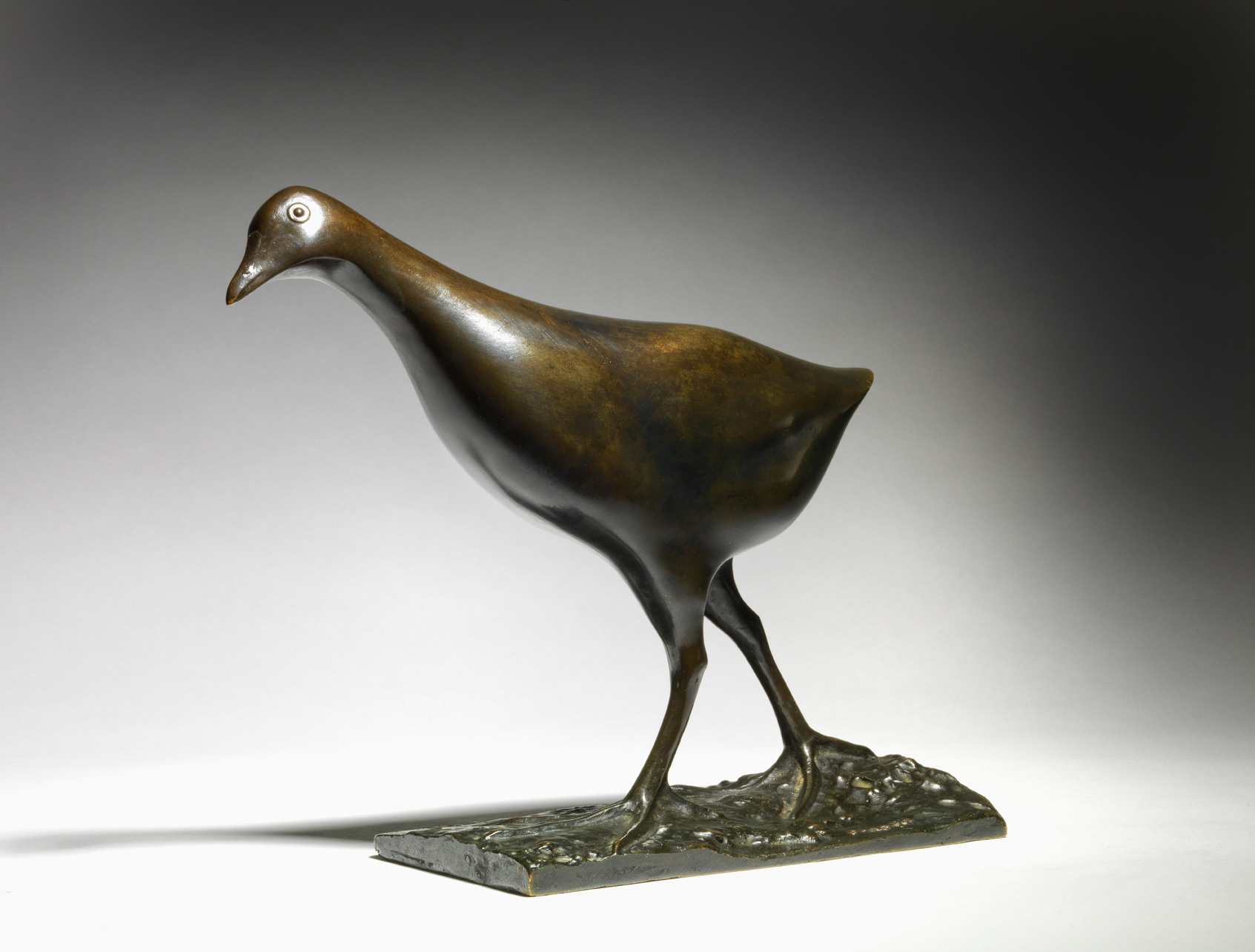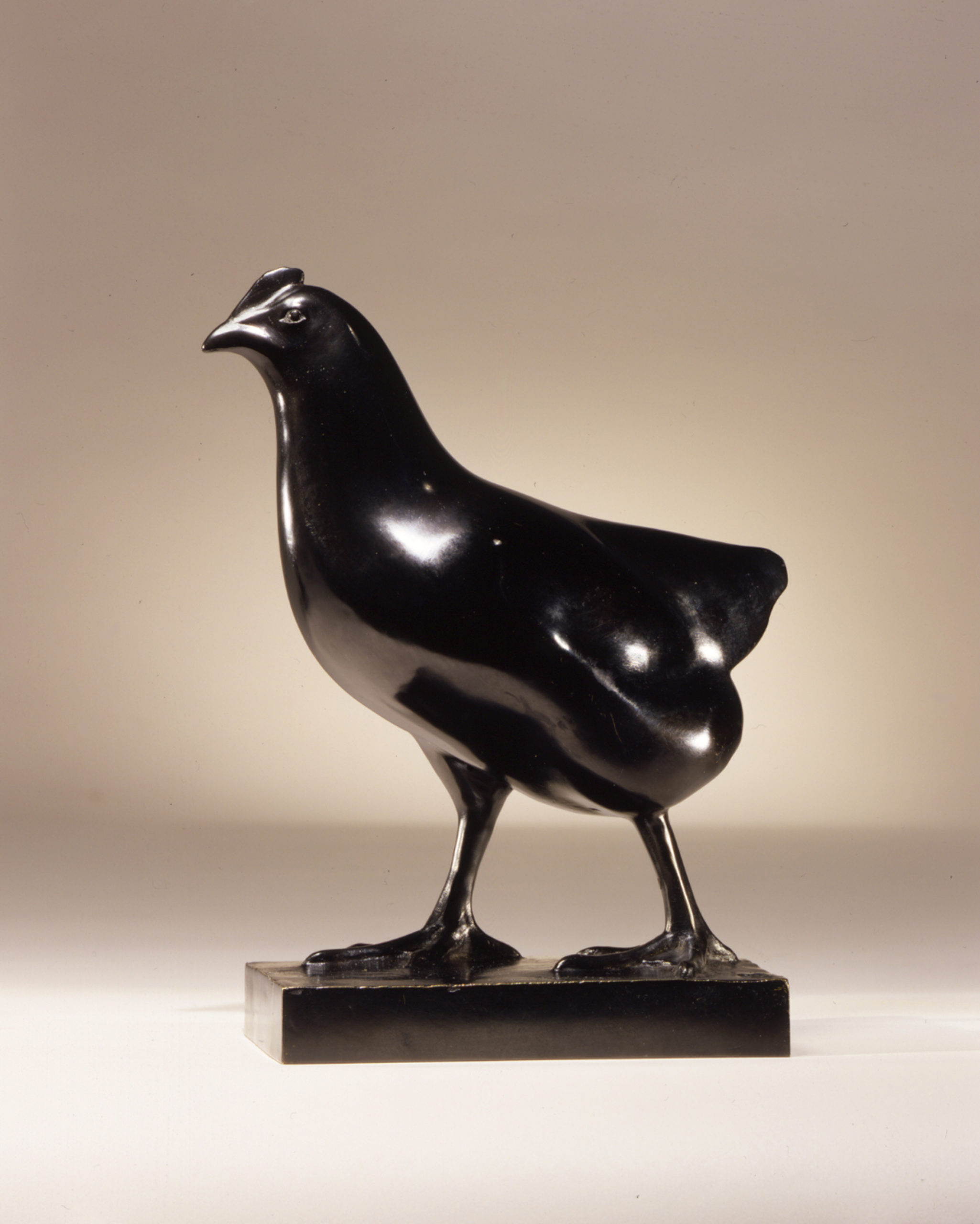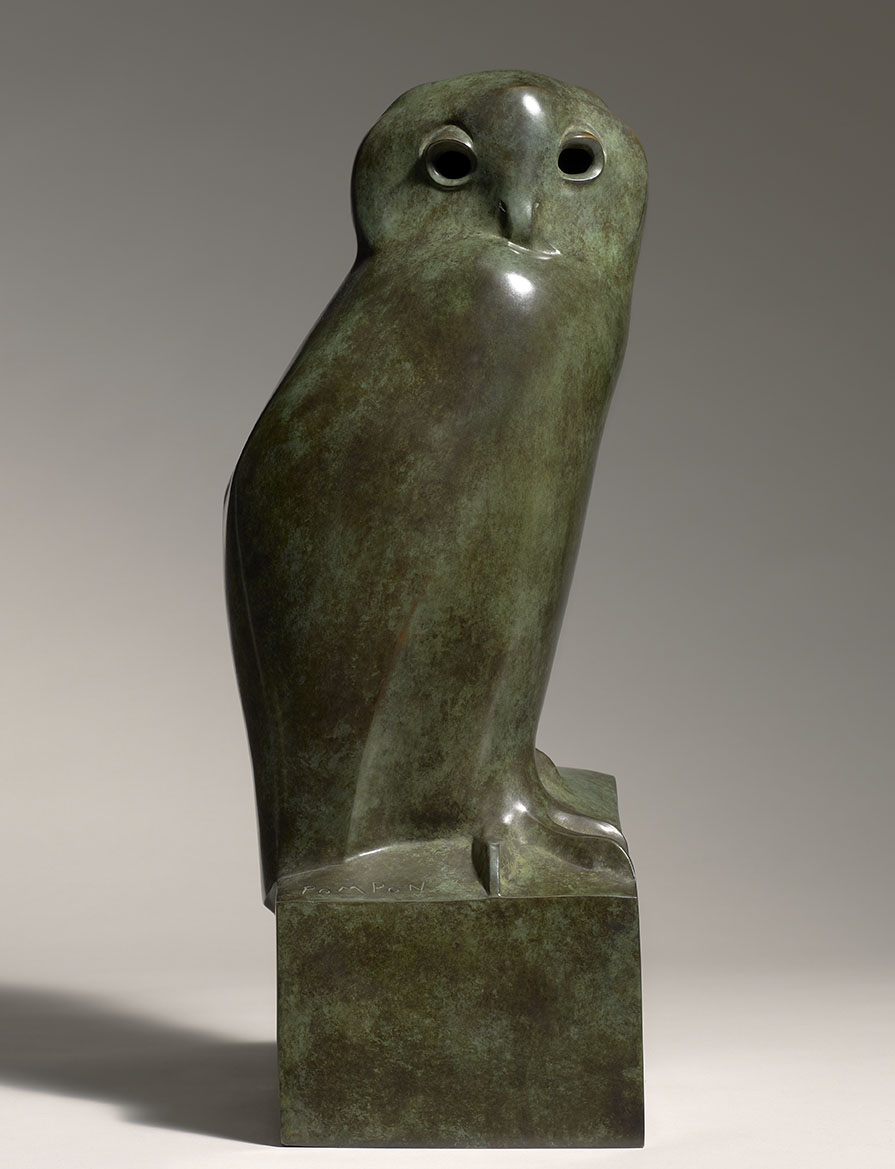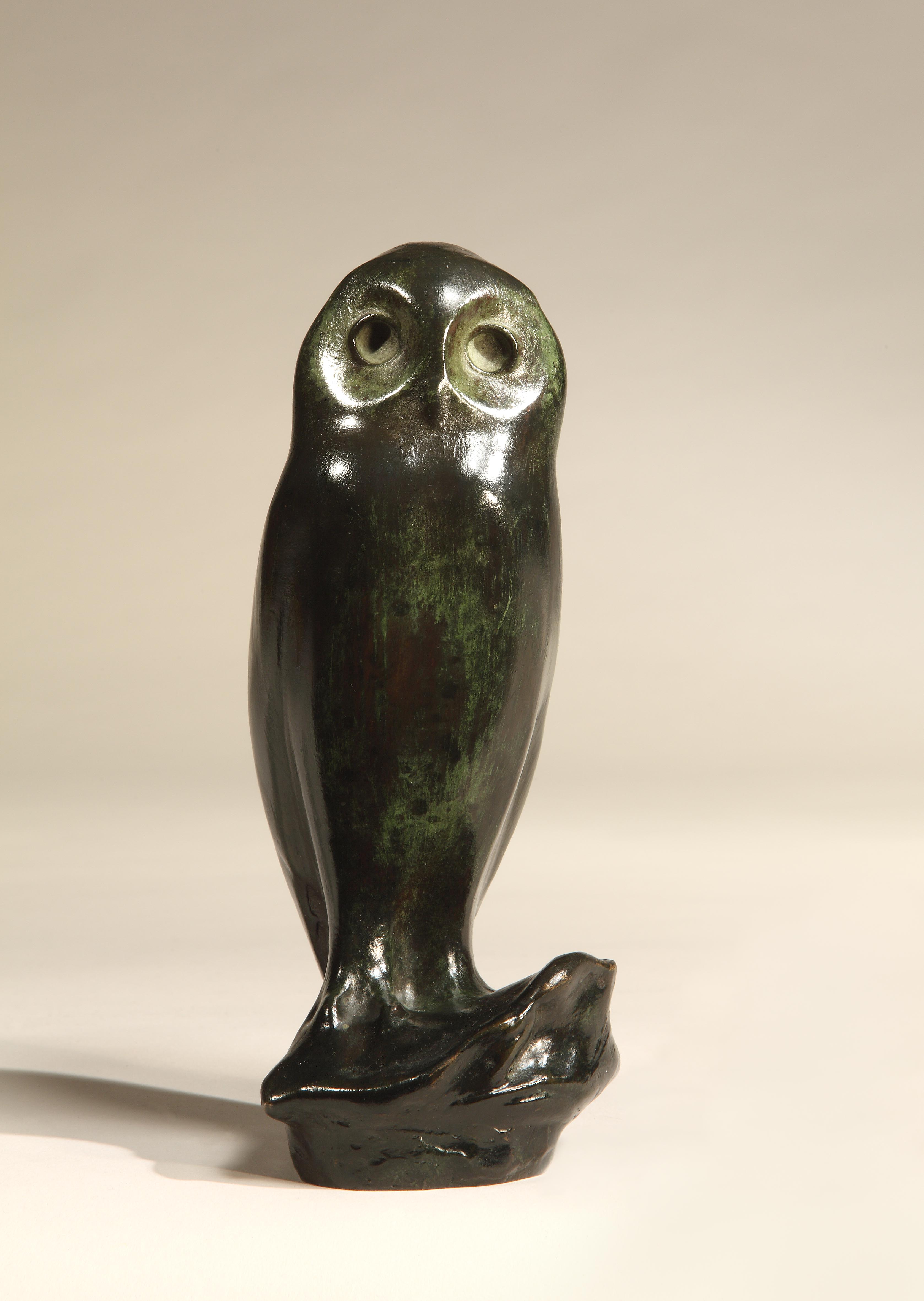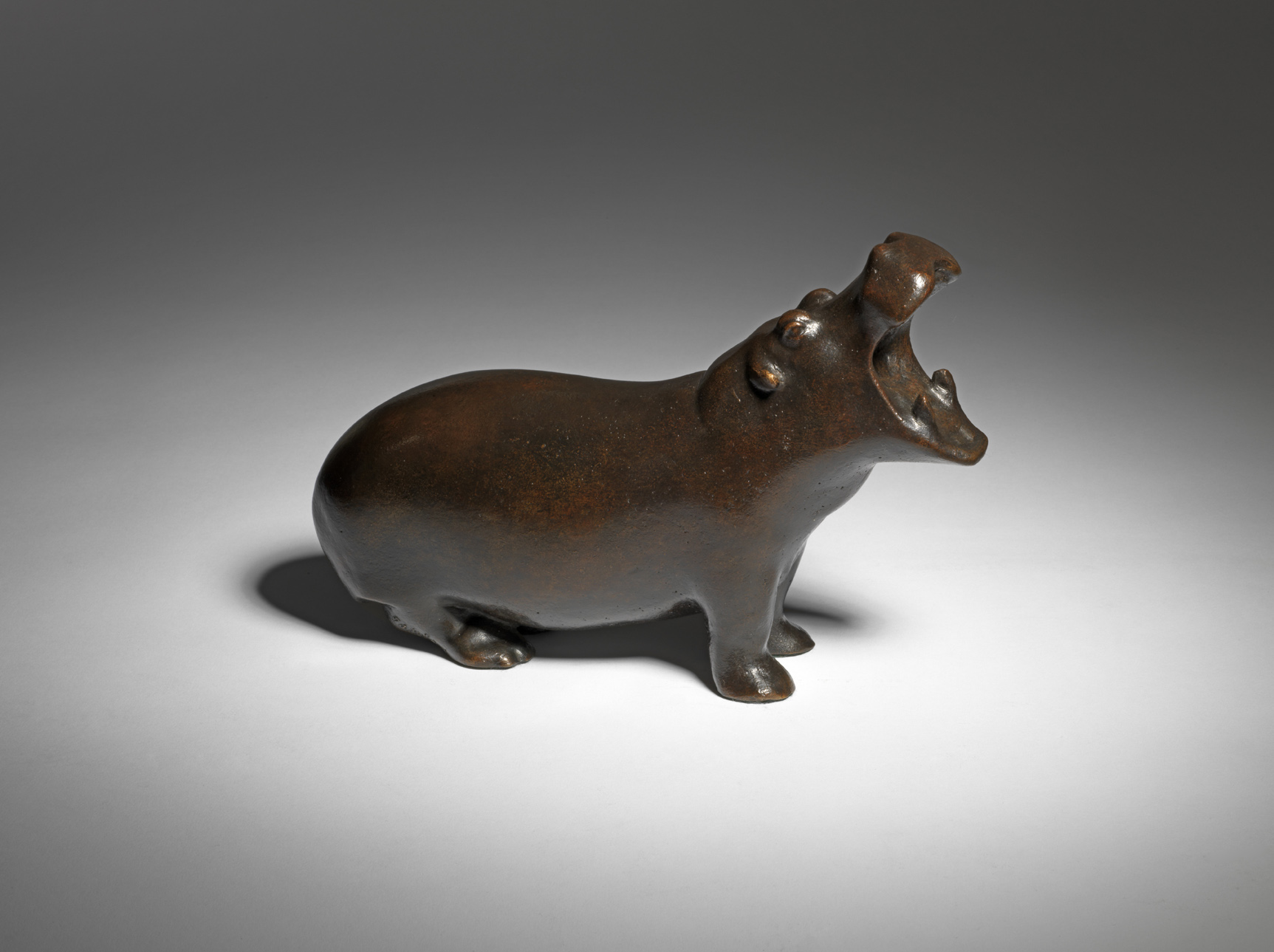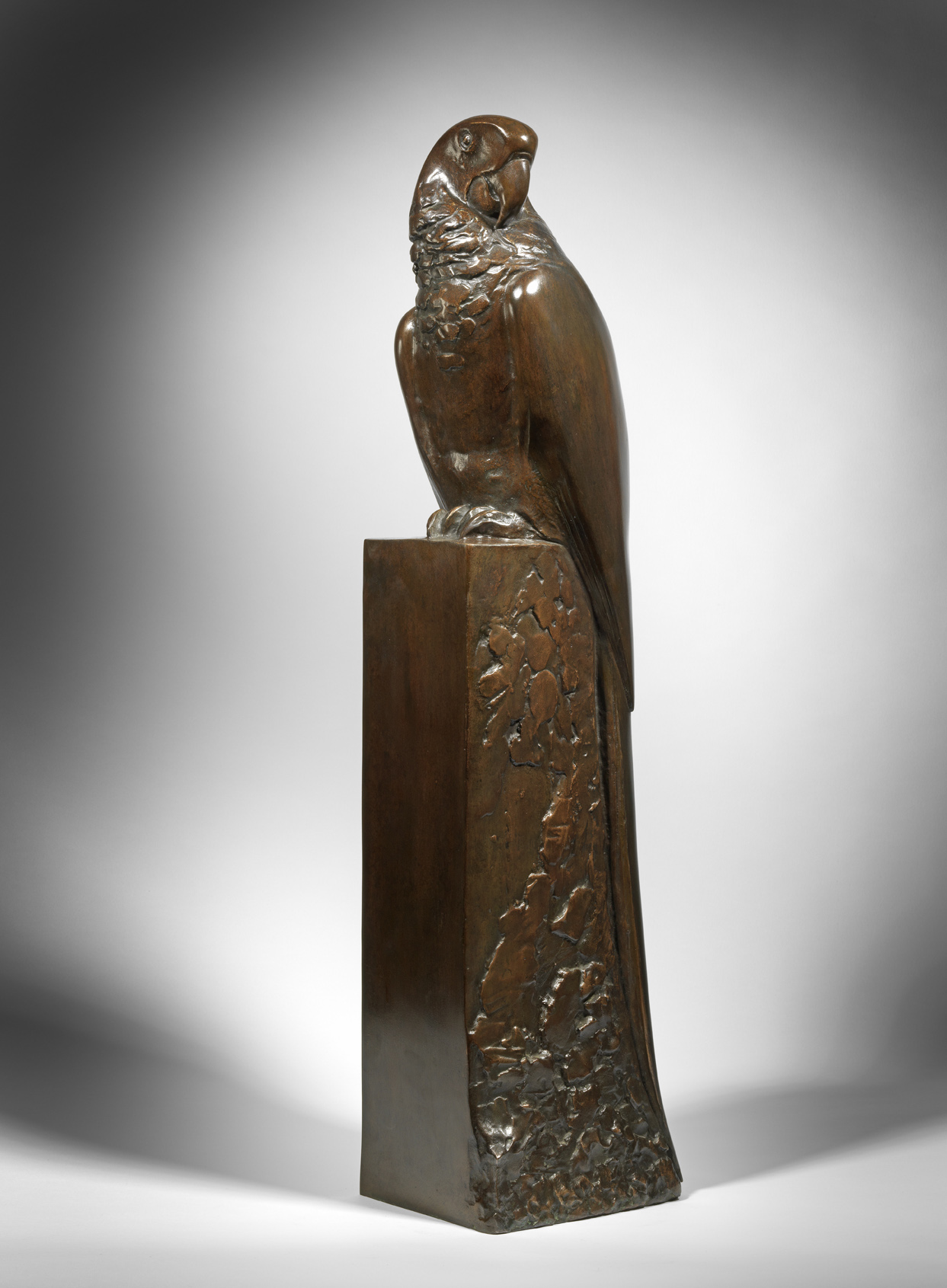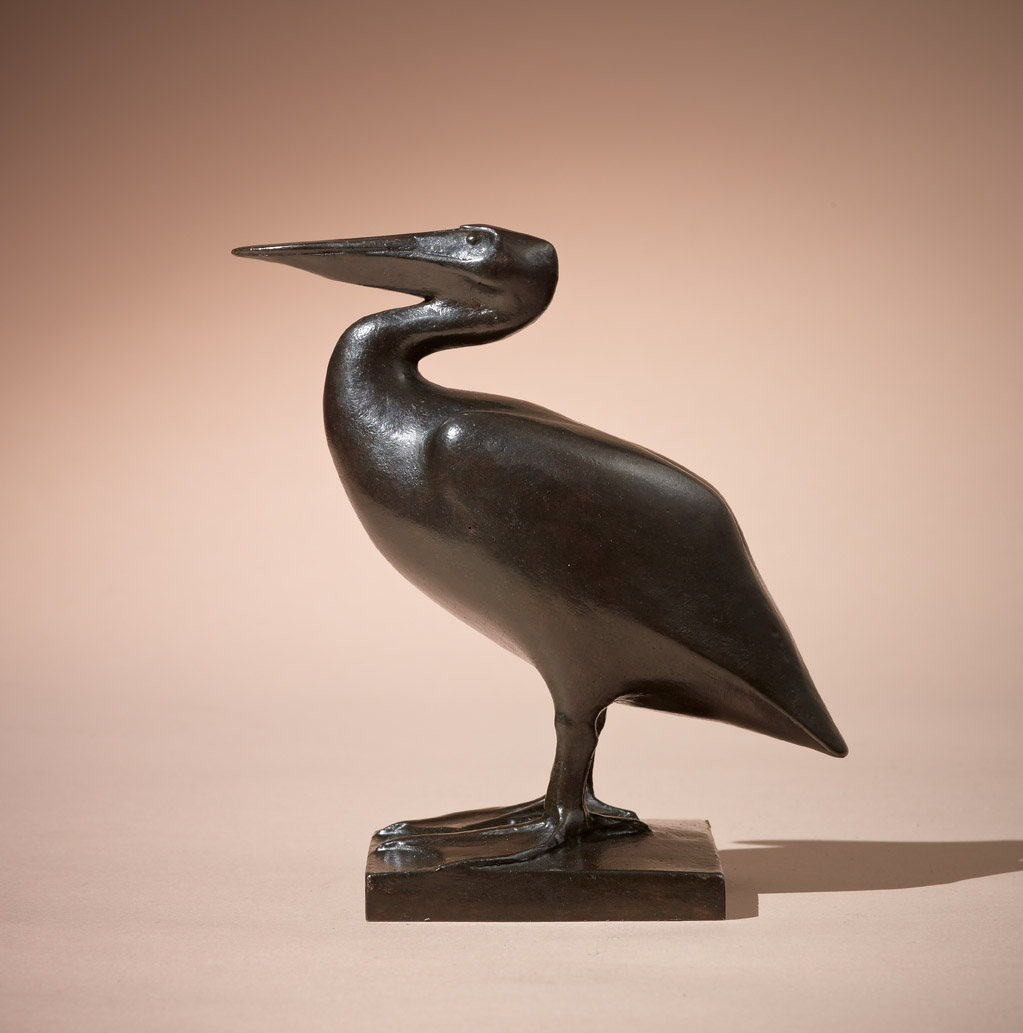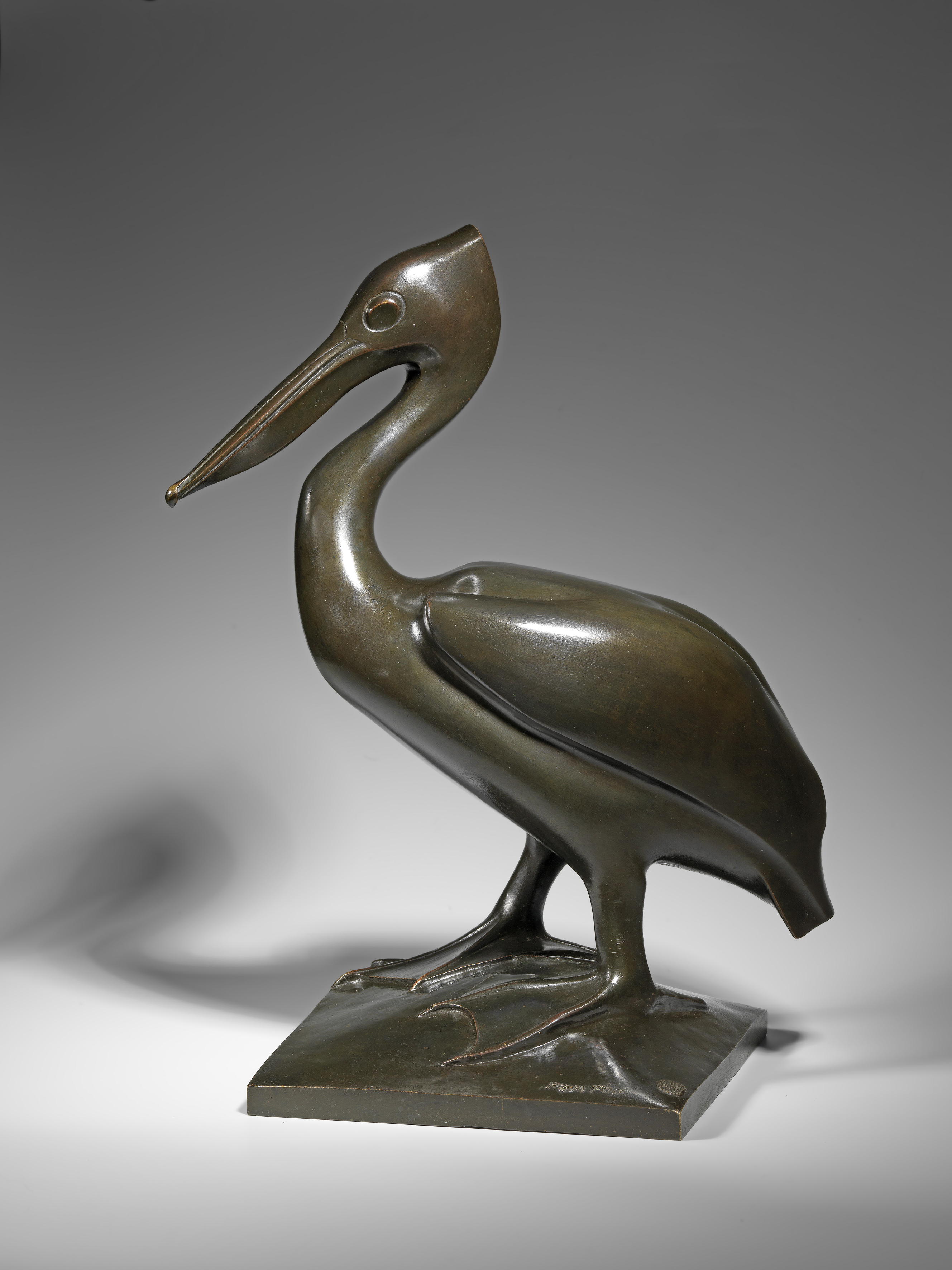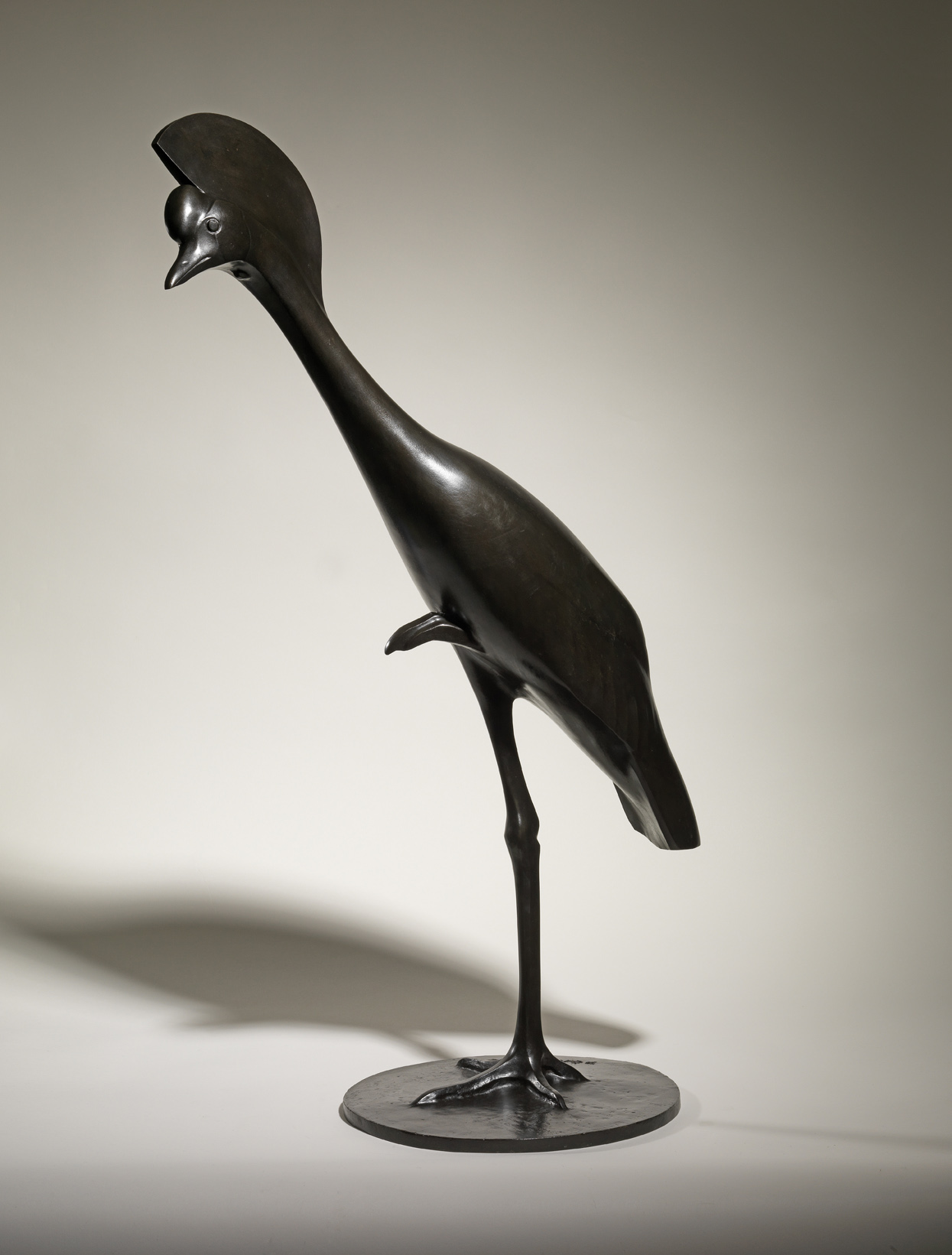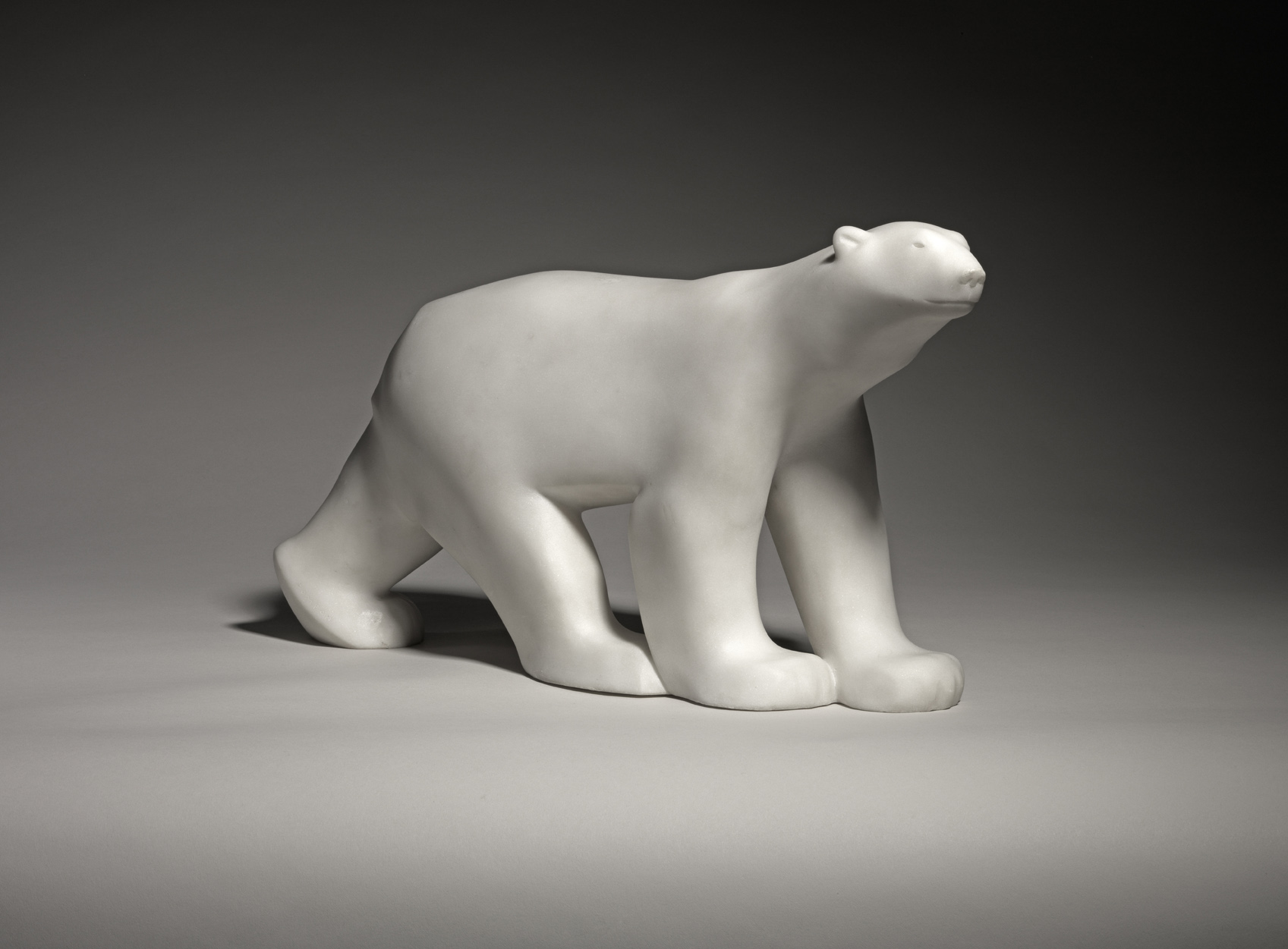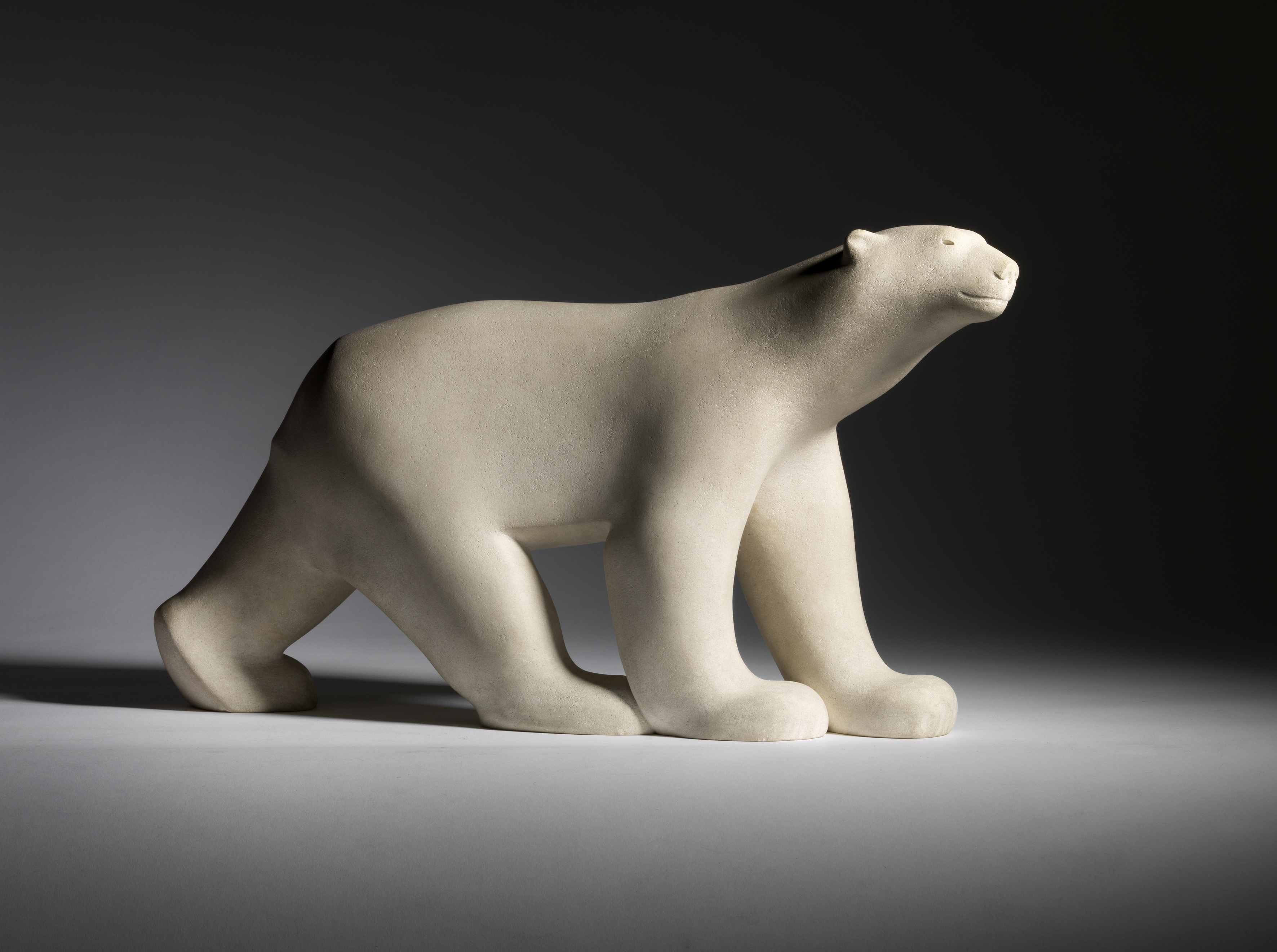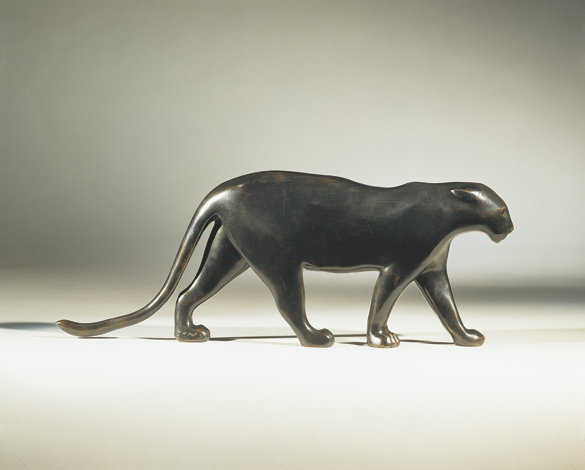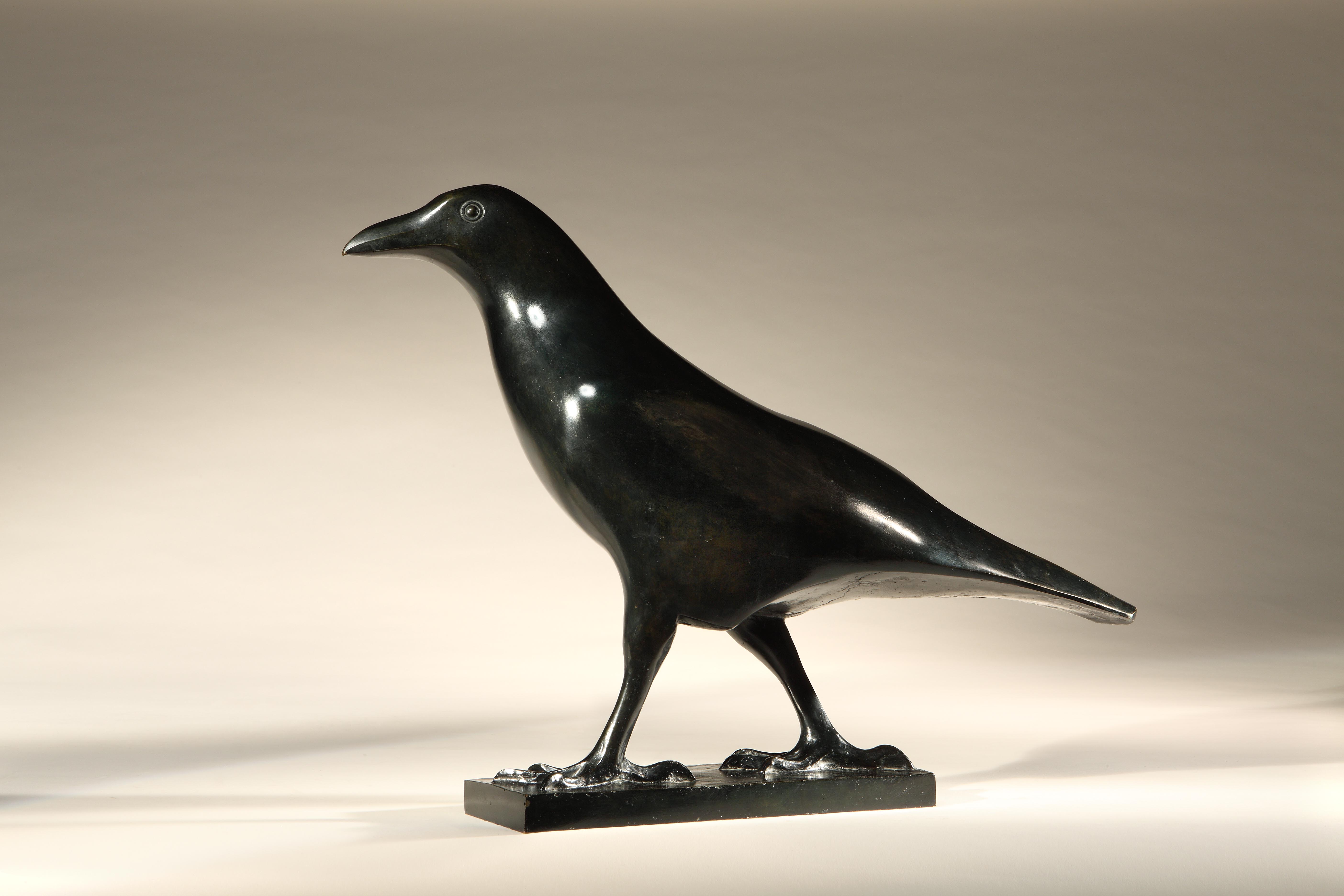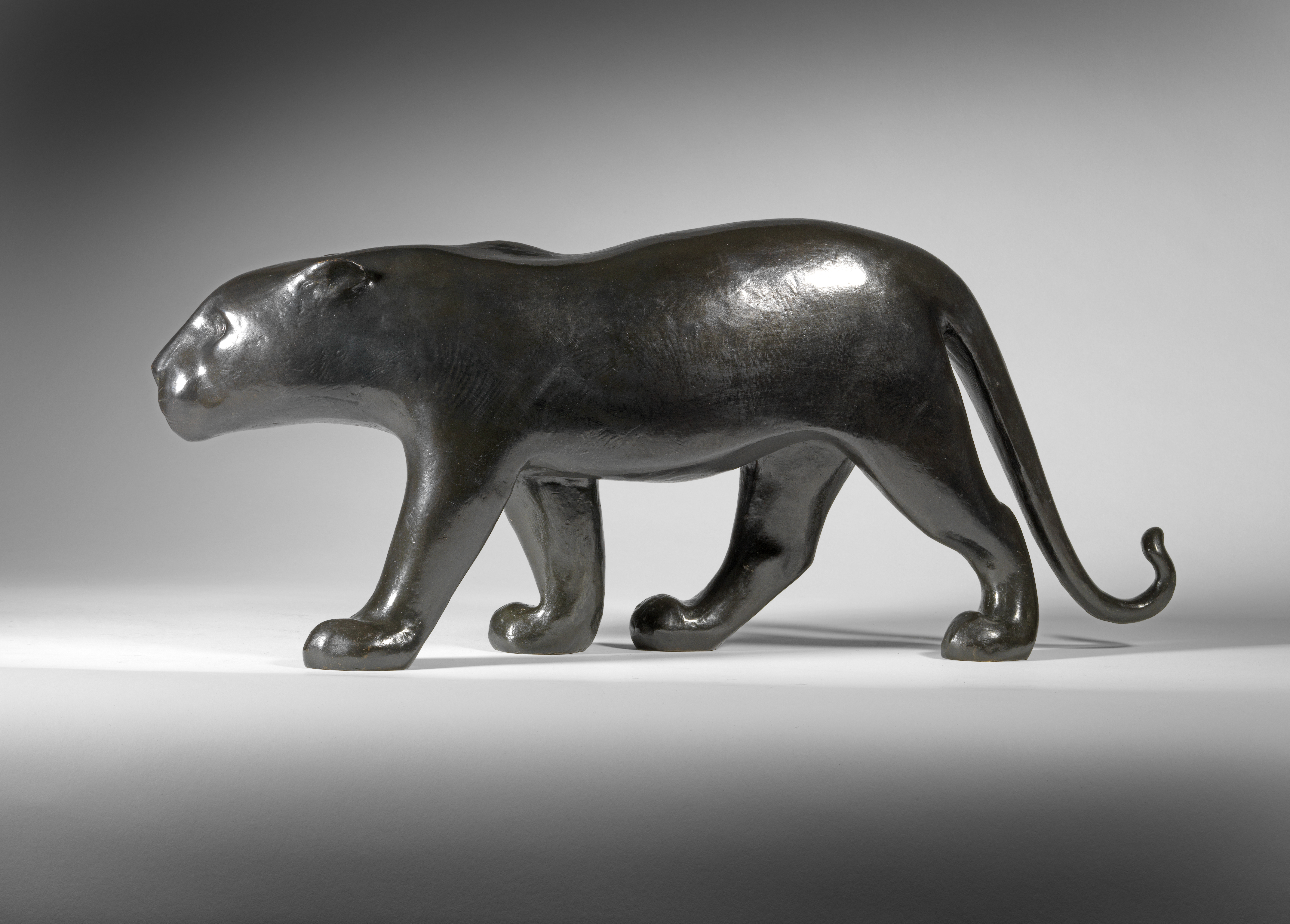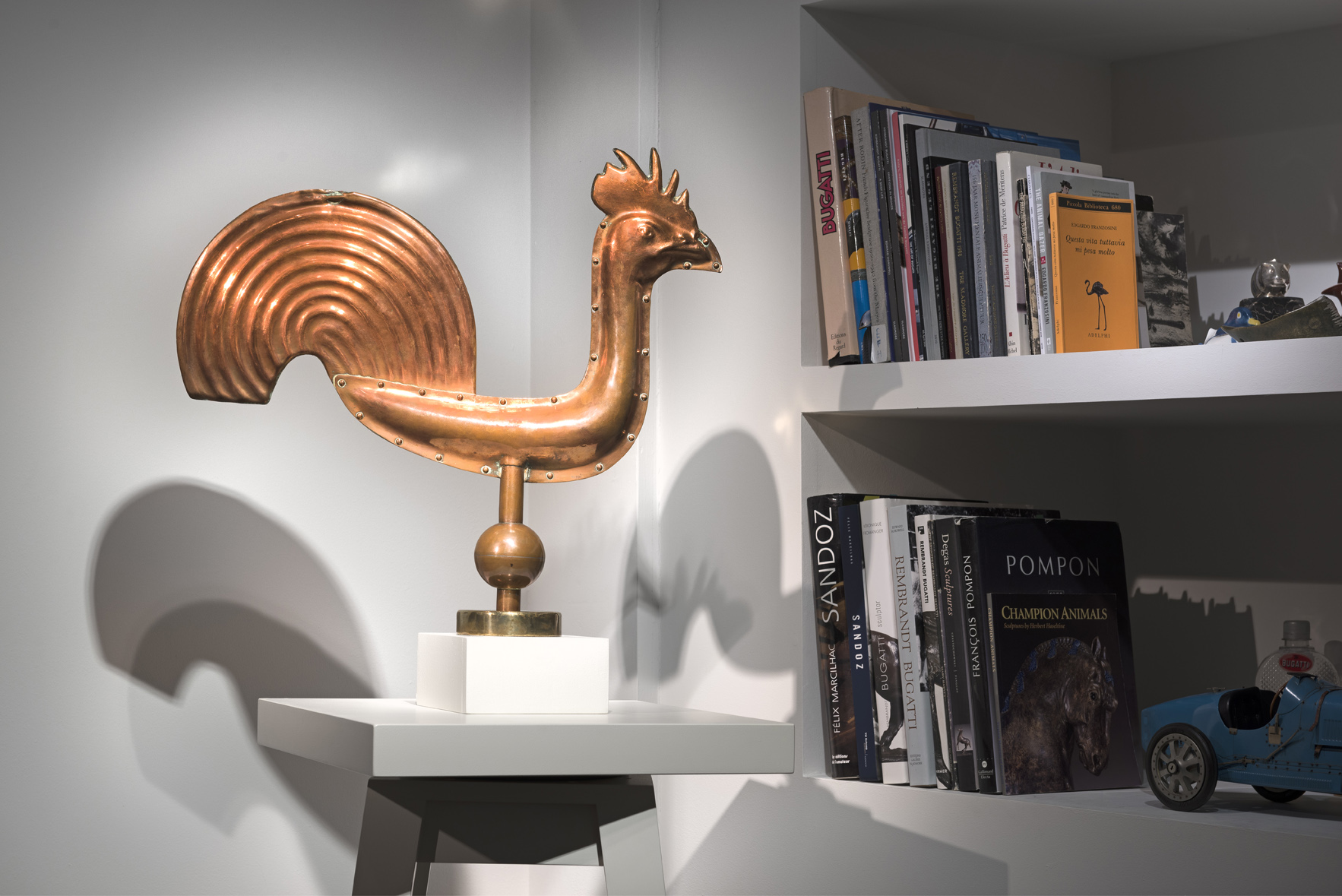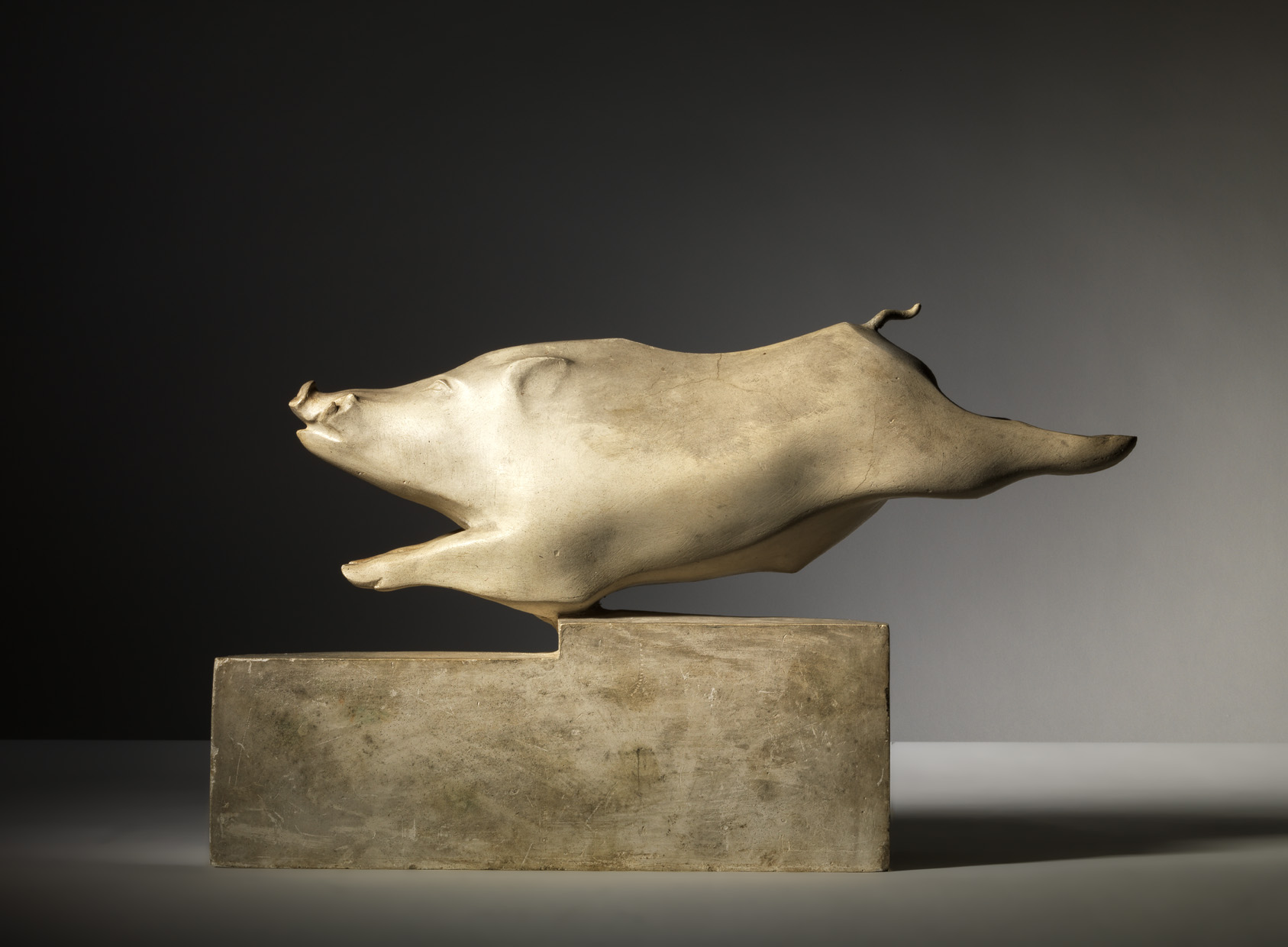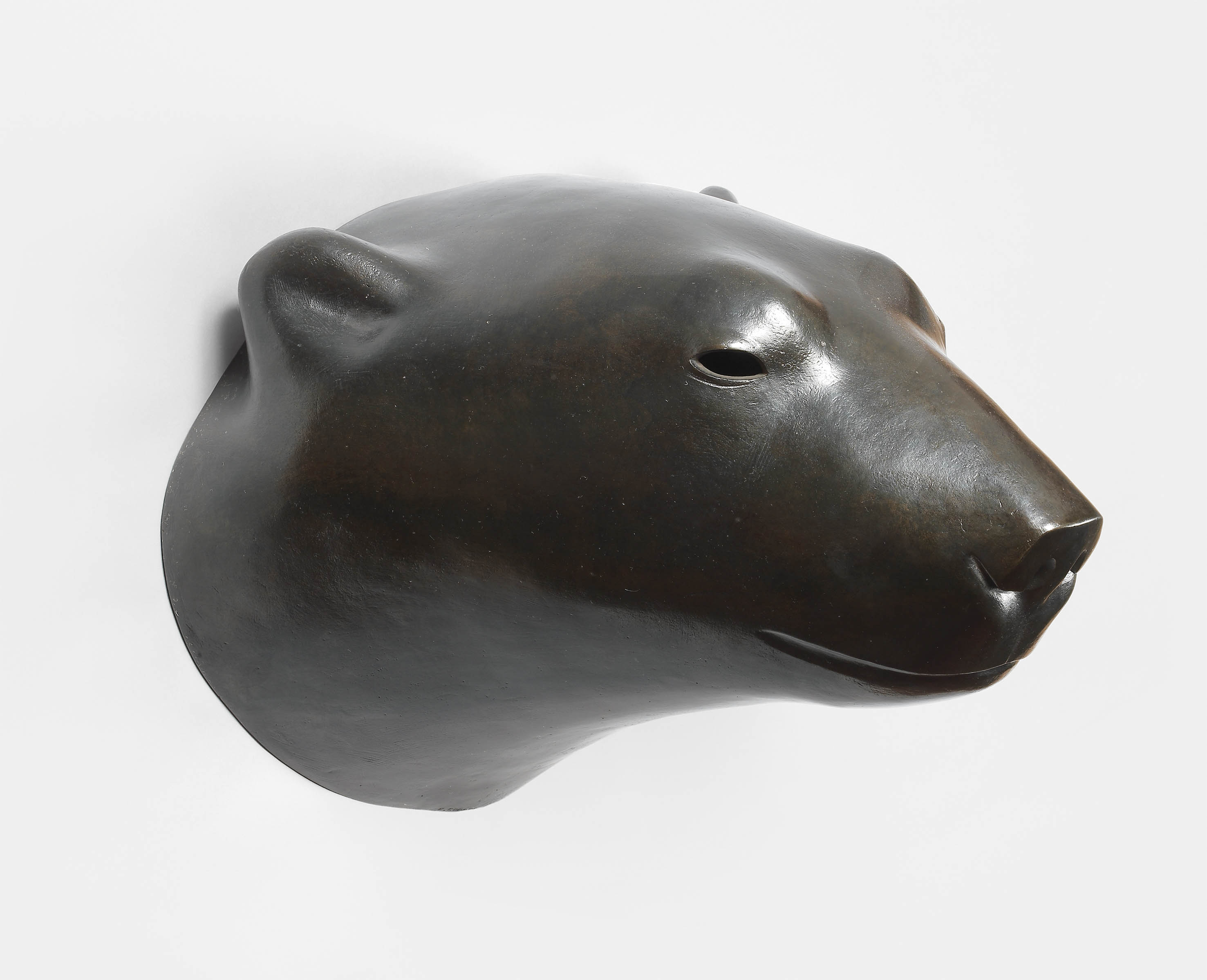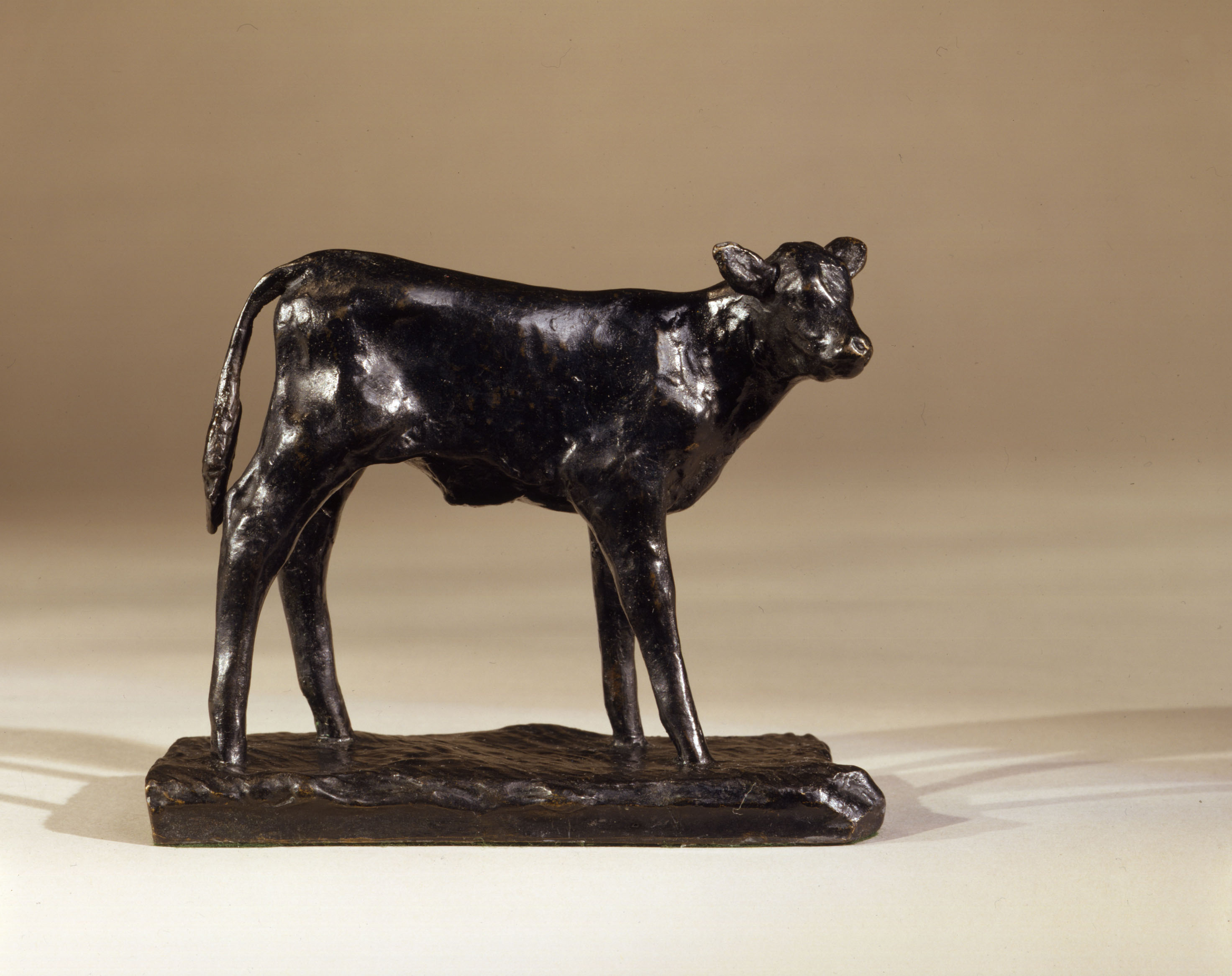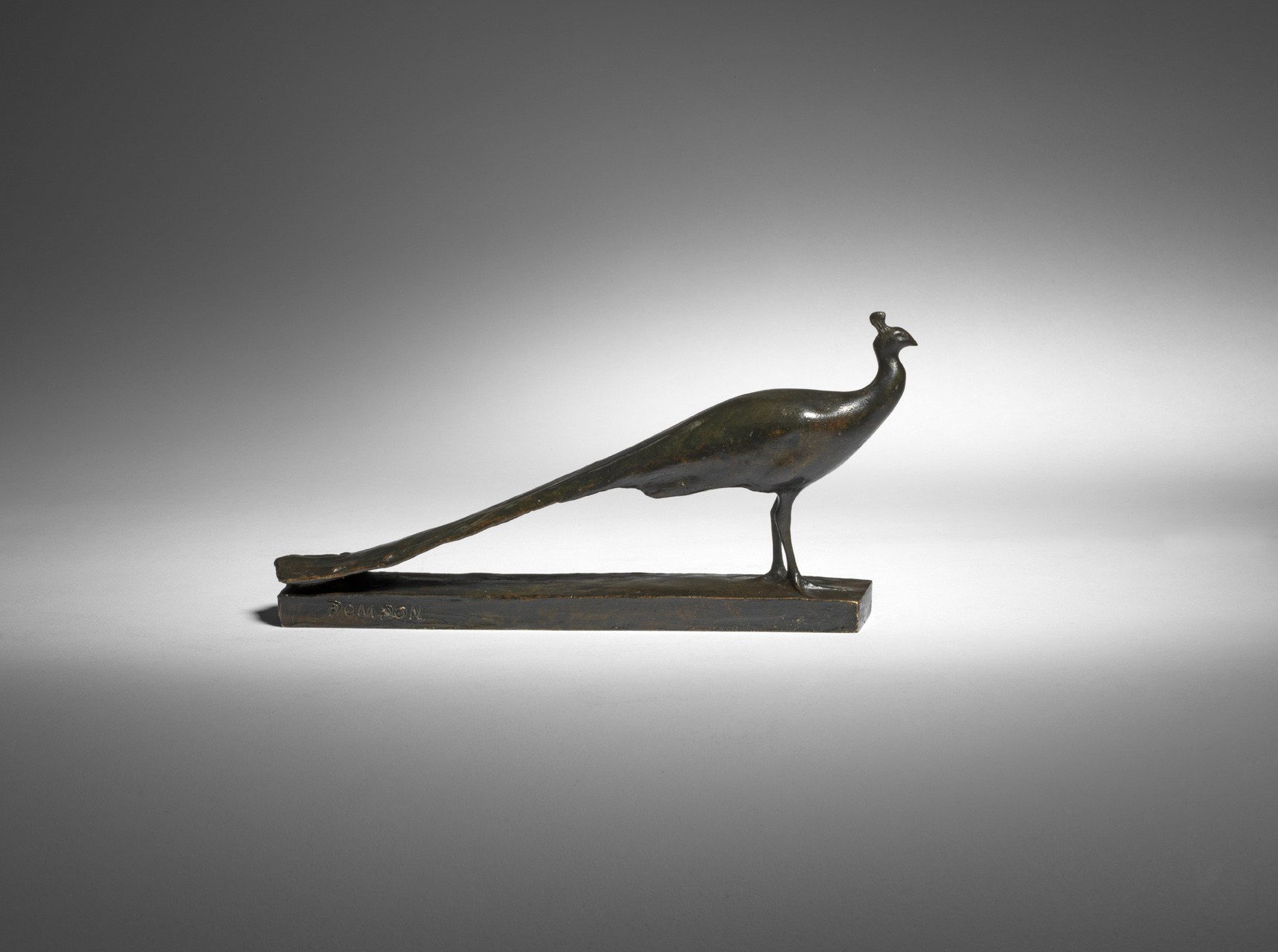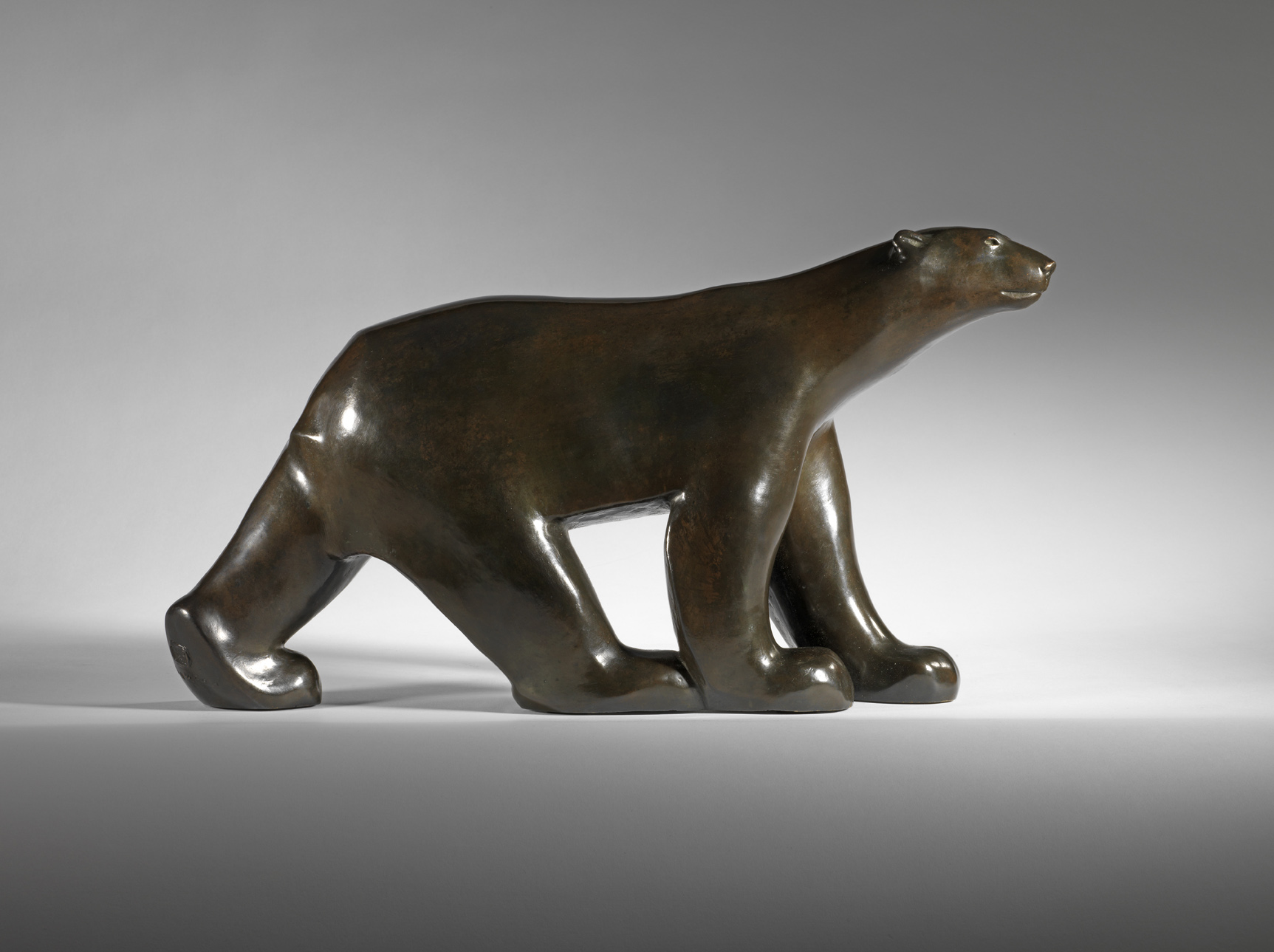
‘You have to look at the animal from a distance. Close to you see all the unimportant detail. From a distance the subject takes on its real significance. The formal relationships become apparent. But you must still simplify, make sacrifices, and deform in order to gain expression.’ Francois Pompon
Pompon’s Polar Bear, begun in 1920 and reworked in different forms for almost fifteen years, cemented the artist’s reputation, becoming a classic of modern sculpture. A series of other signature pieces – panthers, doves, stags, bison and many others – issued from is hand, representing an extraordinary triumph over early adversity, and an increasing burgeoning of talent. Pompon resumed his study of domestic and farm animals also, and in 1931 he was instrumental in setting up ‘Les Douze’, an association of ‘Animaliers’. Other important members were Jouve, Poupelet and Guyot.
Pompon was among that generation who would shift the whole pattern of a career in sculpture away from official patronage and into the modern age of the art market.
More exhibitions followed, but state commissions continued to elude him, and it became clear that he was among that generation who would shift the whole pattern of a career in sculpture away from official patronage and into the modern age of the art market. In the early years of the 20th century, Pompon began to specialise in animal sculpture, working in the open air from beasts in the Jardin des Plantes in Paris and every summer at farms around the commune of Cuy in Burgundy. He showed regularly at the Salons, but suffered continuing financial hardship, which was exacerbated by the First World War and by the illness of his wife, whom he had married in 1882.
In the early 1900s, Pompon began to sell casting rights for his sculptures to Hébrard, the legendary founder and dealer of sculpture. With the support of Hébrard, who gave him a solo show in 1919, and with important collectors such as Jacques Zubaloff acquiring his work, his circumstances began to improve. Critical acclaim grew, and by the mid 1920s he was recognised as part of a new generation of French sculpture (including Aristide Maillol, Jane Poupelet, Charles Despiau, Constantin Brancusi, Chana Orloff, Alexander Archipenko and Pompon’s close friend Joseph Bernard) that had emerged from the shadow of Rodin to affirm a new creed of simplicity, dignity and distilled form.
‘The polar bear’, begun in 1920 and reworked in different forms for almost fifteen years, cemented Pompon’s reputation, becoming a classic of modern sculpture. A series of other signature pieces – panthers, doves, stags, bison and many others – issued from his hand, representing an extraordinary triumph over his early adversity. Pompon also resumed his study of domestic and farm animals, and in 1931 he was instrumental in setting up ‘Les Douze’, an association of Animaliers: other important members of the group were Paul Jouve, Poupelet and Georges Guyot.
International exhibitions, commissions and awards now followed, and despite failing health Pompon worked with increasing energy up to his death in 1933. His Condor surmounts his tomb column in Saulieu, and a museum in the town is devoted to his work. Other works are in museums worldwide, and the Musée d’Orsay in Paris has a significant holding of his plasters, terracottas and bronzes.
Artworks
View all Artworks >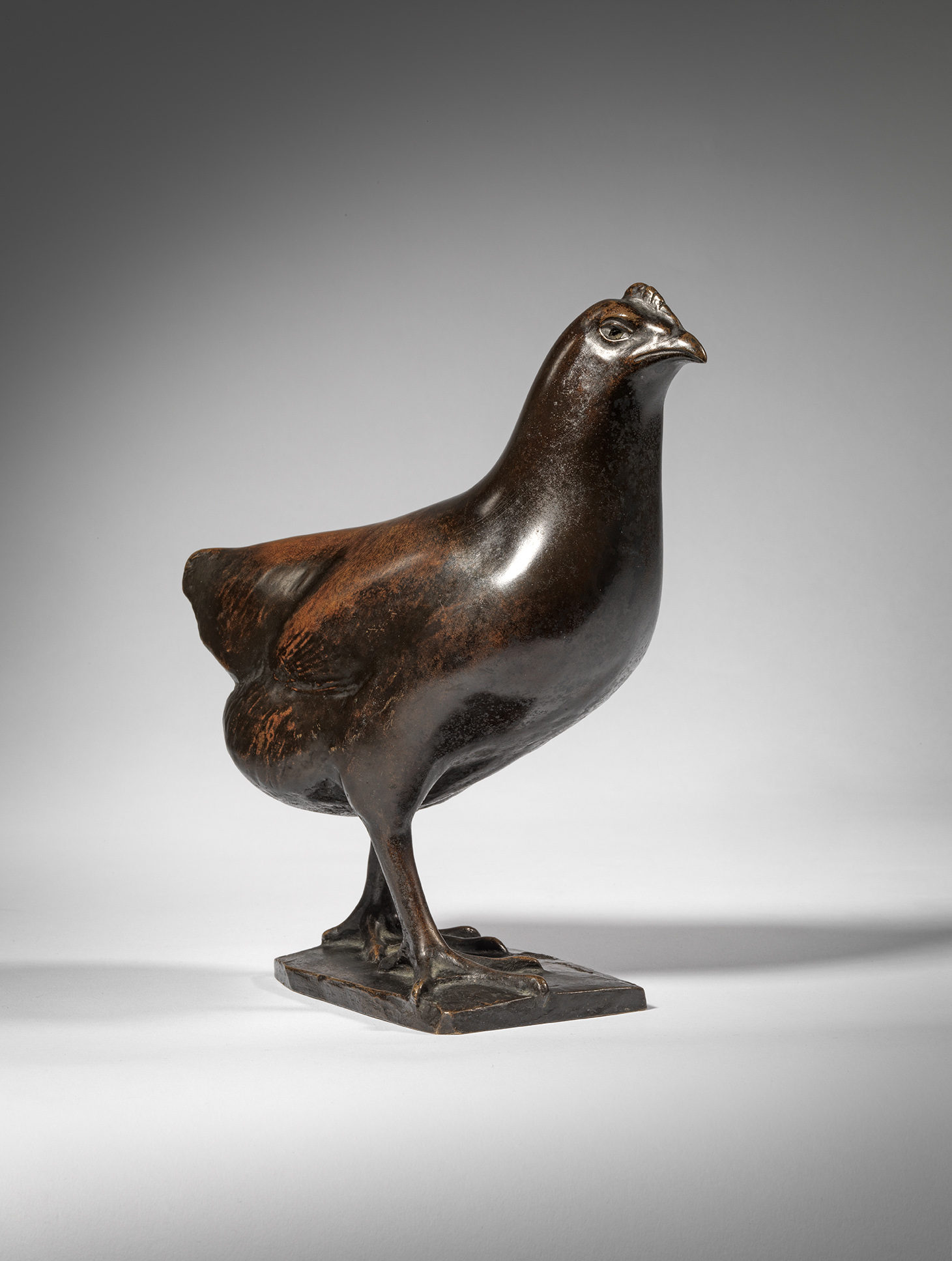
Chicken, 1912
Francois Pompon
A fine quality, twentieth century bronze model of a ‘Chicken’ by Francois Pompon (French, 1855-1933). This bronze was produced using the lost wax process at […]
Exhibitions
View all Exhibitions >Publications
View all Publications >